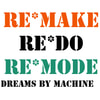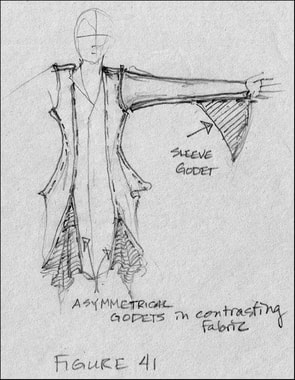|
Okay! Time for a little back step.
I work with clothing, patterns, and sculpture regularly. Have for years. So I take a lot of short cuts. And sometimes I take short cuts with my explanations. Which is not helpful to people who DON'T make costumes every day. So, when I catch myself glossing over something important, I'll do my best to cover the topic better. Back in August, I talked about using old clothes as patterns. Here's what I mean by "taking the clothing apart". Sounds simple, right? But there are some crucial details I left out. If you want to use a piece of clothing as a pattern, you don't have to pick apart every seam. Cutting the seams open with scissors works fine, and it's a lot faster than unpicking. But think about it before you slice. If you cut the seams, that piece of clothing can't be put back together again without becoming a lot smaller. The seam allowances are gone, and the clothing item is now a pattern ONLY. Think of it as a sacrifice to the greater patterning good. But what if you want to remake the original piece of clothing, using the original fabric? You're in for a lot of seam ripping. This means unpicking each and every seam carefully. You'll want good tools. Try a small seam ripper, small sharp scissors and a lint brush to get rid of all the tiny bits of thread. And go slowly. Losing patience pretty much guarantees that you'll tear the fabric. Unpicking isn't hard. It's just slow. If you plan on taking clothing apart, here's some words of warning. Jeans are not your best first project. Take a look at a pair of jeans- seriously. See how many little pockets there are? Check out the waistband, the back yoke, the fly front, the belt loops... and we're not even mentioning the huge rows of double stitching on almost every seam. And the rivets! How are you going to get those out without leaving big gaping holes? The answer is... you're not. And what about knitwear? It's got simple lines and fewer seams (think of a T-shirt)... but take a closer look. Knit fabric isn't hard to work on, but it does take time, effort, forethought, and practice. All stretch fabrics are not created equal. When you're re-making something stretchy, you've got to find material with an equivalent stretch. That means the new fabric should stretch the same amount as the old fabric AND stretch in the same direction. Knits can stretch from side to side or up and down or both. And they don't all stretch the same amount in each direction. Get the stretch in the wrong direction and your new skirt won't fit over your hips, or your shirt won't clear your shoulders. And knitwear is usually made with special equipment. See those seams? Can your machine make those types of seams? Or that type of hem? Most knitwear is sewn together using a 4 or 5 thread overlock, sometimes with stretchable thread. And it's hemmed with a coverstitch machine. These machines are expensive. A regular home sewing machine will work on stretch material, but it takes time and practice to figure out how to sew your seams without making them so loose that they bubble out of shape. Or so tight that the threads pop and break each time a seam is stretched. I'm not trying to scare you. But the goal here is for you to be able to make something right away, not sit and curse at it helplessly. So... For your first project, you want something simple. With single stitched seams. In a plain woven fabric, preferably without a lot of pockets or zippers. With practice, you'll be able to work your way up to much more difficult things. And pretty soon they'll be easy for you too. Staple Draping by A.Laura Brody is licensed under a Creative Commons Attribution-NonCommercial-ShareAlike 3.0 Unported Licen
0 Comments
|
A. Laura Brody
I re*make mobility devices and materials and give them new lives. Sometimes I staple drape. Archives
June 2024
|


 RSS Feed
RSS Feed